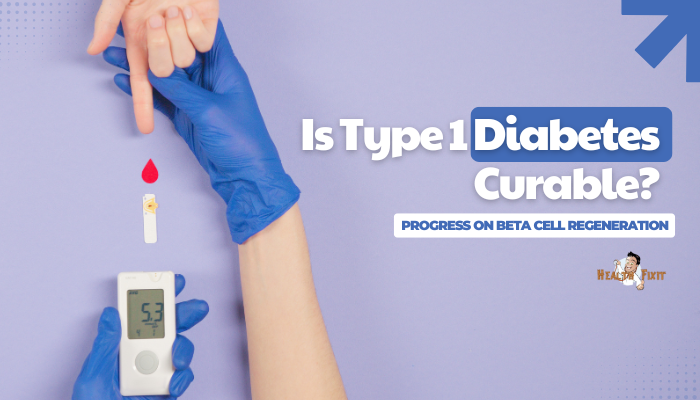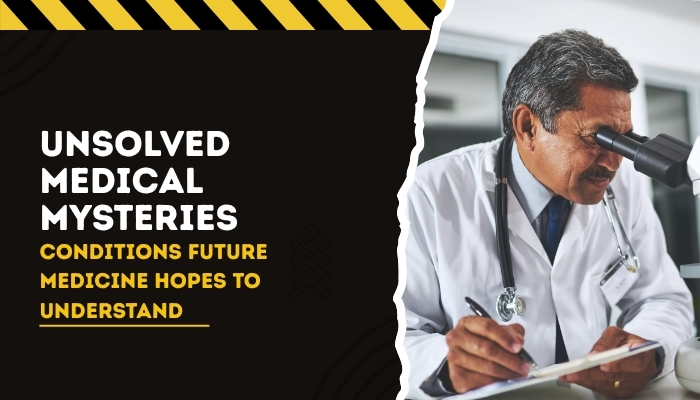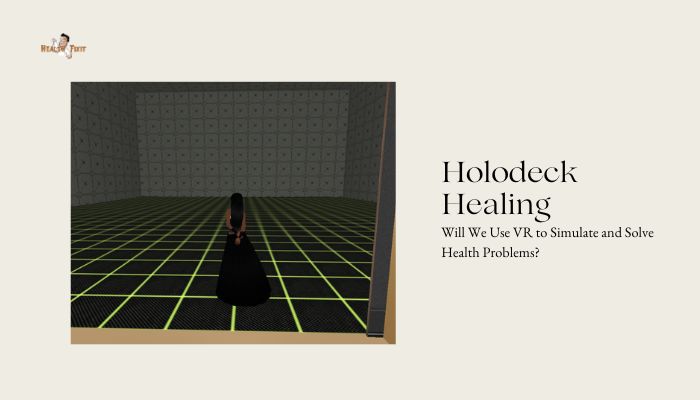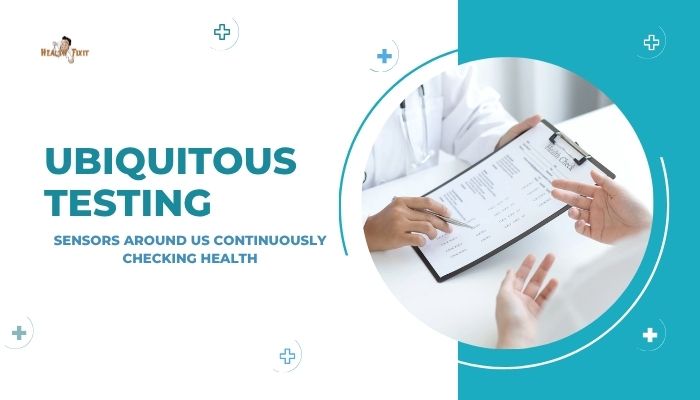Introduction
Type 1 diabetes (T1D) is an autoimmune disorder where the body’s immune system attacks and destroys the insulin-producing beta cells in the pancreas.
Without adequate insulin, cells cannot properly absorb glucose, leading to high blood sugar and long-term health complications.
Traditional T1D management relies on insulin injections or pumps alongside blood glucose monitoring.
While these methods are effective, they do not cure the disease or restore the pancreas’s natural function.
Today, researchers aim to regenerate beta cells or create new ones, offering a path toward an eventual cure. Methods range from stem cell therapies to reprogramming other pancreatic cells, attempting to restore the body’s insulin production and free patients from daily insulin therapy.
This article explores how beta cell regeneration works, highlights the most promising strategies, and examines the hurdles before a practical T1D cure.
Why Focus on Beta Cell Regeneration?
The Core Problem in Type 1 Diabetes
In T1D, beta cells in the pancreatic islets are the primary target of an autoimmune attack. These specialized cells normally sense blood glucose and secrete insulin accordingly. When they are lost, the body’s glycemic control disappears, resulting in chronic hyperglycemia and the need for exogenous insulin. Regenerating beta cells could restore normal glucose regulation and remove the need for constant insulin dosing.
Limitations of Insulin Therapy
Even with modern pumps or continuous glucose monitors, insulin therapy demands meticulous attention. Hyperglycemia and hypoglycemia episodes remain risks. Restoring beta cell function could remove these constant burdens. Furthermore, it may curtail long-term diabetes complications such as neuropathy, retinopathy, and cardiovascular disease.
Key Strategies for Beta Cell Regeneration
Stem Cell–Derived Beta Cells
One leading approach uses pluripotent stem cells, such as embryonic stem cells (ESCs) or induced pluripotent stem cells (iPSCs). In laboratory conditions, scientists guide these cells through developmental stages to become insulin-producing beta-like cells.
- Differentiation Protocols
- Specific growth factors and chemical signals lead stem cells through endoderm to pancreatic progenitors and eventually beta cells.
- Ongoing research refines these stages to produce cells that closely mirror human beta cell function.
- Specific growth factors and chemical signals lead stem cells through endoderm to pancreatic progenitors and eventually beta cells.
- Implantation and Encapsulation
- The newly formed beta-like cells are typically transplanted under the skin or in the abdominal cavity.
- Encapsulation devices may protect them from immune attack while allowing glucose and insulin exchange.
- The newly formed beta-like cells are typically transplanted under the skin or in the abdominal cavity.
- Clinical Trials
- Companies like ViaCyte have tested stem cell–derived implants in early-phase trials.
- Some patients show partial insulin production, though improved cell survival and full glycemic independence remain challenges.
- Companies like ViaCyte have tested stem cell–derived implants in early-phase trials.
Reprogramming Other Pancreatic Cells
Another concept: convert non-beta cells in the pancreas—such as alpha cells or ductal cells—into functional beta cells. Labs have identified transcription factors (e.g., Pdx1, Ngn3, MafA) that can induce a beta cell phenotype:
- In Vivo Transformation
- Delivering these factors via gene therapy might coax the pancreas to regenerate local insulin producers.
- Trials in mice show improved glucose control, but controlling the reprogramming process remains tricky.
- Delivering these factors via gene therapy might coax the pancreas to regenerate local insulin producers.
- Partial Regeneration
- Some patients with T1D still retain small numbers of beta cells. Enhancing these cells’ replication or reactivating quiescent progenitors might restore partial function.
- Anti-inflammatory treatments to quell autoimmunity are essential in parallel.
- Some patients with T1D still retain small numbers of beta cells. Enhancing these cells’ replication or reactivating quiescent progenitors might restore partial function.
Small Molecule Induction
Certain drugs or molecules can push pancreatic progenitor cells to differentiate into beta cells or accelerate beta cell replication. Scientists screen chemical libraries for compounds that:
- Stimulate Beta Cell Proliferation: For instance, gamma-aminobutyric acid (GABA) or certain DYRK1A inhibitors show promise in increasing replication rates in lab experiments.
- Protect Beta Cells: Agents that reduce oxidative stress or immune assault can preserve new and existing beta cells, sustaining their function.
While promising, these molecules often require advanced delivery methods to target only the pancreas and avoid off-target effects.
Overcoming Autoimmunity
Recreating beta cells is only half the battle. T1D’s underlying autoimmunity can destroy new or transplanted beta cells unless it’s suppressed or modulated. Approaches include:
Immunosuppressive Drugs
- Standard immunosuppressants (e.g., tacrolimus, mycophenolate mofetil) can protect transplanted beta cells but carry side effects such as infection risk.
- Researchers want less toxic, more targeted options.
Immune Tolerance Induction
- Costimulation Blockade: Agents that block T cell activation pathways (e.g., CTLA-4, CD28) can reduce autoimmune attacks.
- Regulatory T Cells (Tregs): Expanding or transferring Tregs might quell autoimmunity specifically against beta cells.
- Vaccines or Peptide Therapies: Some labs investigate injections of beta cell antigens to retrain the immune system, akin to allergy shots.
Encapsulation and Shielding
- Physical barriers—like semipermeable membranes—protect transplanted beta cells from direct immune contact.
- These devices allow glucose and insulin diffusion but block larger immune cells or antibodies.
- Ongoing improvement is needed to prevent issues like fibrosis and oxygen depletion inside capsules.
Clinical Progress and Notable Trials
Islet Transplants
Before stem cells, islet cell transplantation from deceased donors to T1D patients (the Edmonton Protocol) proved some success. Patients often reduced or eliminated insulin needs temporarily. However, donor islets are scarce, and immunosuppression is still required. This sets the stage for lab-grown replacements that bypass donor limitations.
ViaCyte’s Trials
ViaCyte’s PEC-Encap device encapsulates human embryonic stem cell–derived pancreatic progenitors. Early-phase trials showed partial insulin production. However, immune-mediated device failure remains an obstacle, leading the company to refine designs and possibly combine with immunomodulators.
Sernova’s Implant
Sernova uses a Cell Pouch—a surgically implanted device that forms a vascularized cavity for donor islets or stem cell–derived cells. Early trial data suggests better engraftment potential, but large-scale success and long-term insulin independence data are still pending.
T1D Cure Trials
A handful of small trials combine islet regeneration or transplantation with advanced immune therapy. For instance, Teplizumab—an anti-CD3 monoclonal antibody—delays onset in high-risk individuals. If used alongside beta cell regeneration, it might preserve or restore endogenous insulin production more permanently.
Challenges on the Road to a Cure
Beta Cell Maturity and Function
Lab-grown cells must sense glucose and release insulin at physiologically relevant rates. Many cells in current protocols show partial function, lacking the precise glucose responsiveness of native beta cells.
Longevity and Stability
A true cure demands stable, long-lived beta cells without a second wave of autoimmunity destroying them. Ensuring robust vascularization and controlling local inflammation remain obstacles.
Safety and Tumor Risks
Pluripotent stem cells carry a slight risk of forming teratomas if any undifferentiated cells remain at transplantation. Strict quality control is essential.
Cost and Access
Personalized or stem cell–based treatments can be expensive. Scaling manufacturing, establishing logistic chains, and obtaining insurance coverage pose formidable tasks for broad adoption.
Future Outlook
Despite formidable challenges, beta cell regeneration has advanced significantly. The next decade may see combined therapies—stem cell–derived beta cells plus targeted immune interventions—reach more robust clinical outcomes. Additional breakthroughs might come from:
- Gene Editing
- CRISPR-based corrections or modifications to enhance cell survival or reduce immunogenicity.
- CRISPR-based corrections or modifications to enhance cell survival or reduce immunogenicity.
- Bioengineered Scaffolds
- Tissue engineering solutions that optimize beta cell engraftment, vascularization, and nutrient supply.
- Tissue engineering solutions that optimize beta cell engraftment, vascularization, and nutrient supply.
- Improved Immune Profiling
- Personalized therapy that matches each patient’s immune profile, refining or reducing the need for broad immunosuppression.
- Personalized therapy that matches each patient’s immune profile, refining or reducing the need for broad immunosuppression.
Should these efforts coalesce, T1D might eventually be managed via a one-time or periodic procedure that regenerates a patient’s insulin production, rather than requiring lifelong insulin injections.
Practical Takeaways for Patients
- Clinical Trials: Patients can watch for relevant trials on the NIH database (ClinicalTrials.gov) or specialized T1D research centers.
- Lifestyle Still Matters: Even with experimental therapies, controlling diet, exercise, and glucose monitoring remain integral to avoid complications until a stable cure emerges.
- Combined Approach: Future cure strategies likely entail both new beta cells and controlling autoimmunity. Early trials might carry higher risks but could offer partial insulin independence.
While a definitive, universal cure is not yet at hand, the combination of advanced science and persistent global research efforts continues to break barriers in T1D care.
Conclusion
Type 1 diabetes has long demanded constant vigilance, but hope for a cure grows. Scientists develop innovative ways to regenerate or replace insulin-producing beta cells using stem cells, reprogramming methods, and small molecules.
Overcoming the disease’s autoimmune nature remains the primary challenge, requiring advanced immune modulation or physical encapsulation technologies.
Key breakthroughs in early clinical trials highlight partial restoration of endogenous insulin, though complete remission and robust long-term function remain elusive.
With ongoing refinements—better cell differentiation, safer immunotherapies, and cost-effective scaling—beta cell regeneration might evolve from a research dream into a transformative T1D treatment.
If so, patients worldwide could eventually live free from the burdens of daily insulin therapy and the fear of complications, heralding a new paradigm in diabetes care.
References
- Shapiro AMJ, Ricordi C, Hering BJ, et al. International trial of the Edmonton protocol for islet transplantation. N Engl J Med. 2006;355(13):1318–1330.
- Pagliuca FW, Millman JR, Gürtler M, et al. Generation of functional human pancreatic β cells in vitro. Cell. 2014;159(2):428–439.
- Rezania A, Bruin JE, Arora P, et al. Reversal of diabetes with insulin-producing cells derived in vitro from human pluripotent stem cells. Nat Biotechnol. 2014;32(11):1121–1133.
- Russell SJ, El-Khatib FH, Nathan DM, et al. Reimagining type 1 diabetes therapy: partial clinical success with immune therapy. Diabetes Care. 2021;44(12):2783–2791.
- Golech SA, Bader E, Opare-Addo L, et al. Beta cell regeneration in the pancreas: cellular sources and molecular drivers. Endocr Rev. 2020;41(2):203–222.
- Millman JR, Xie C, Van Dervort A, et al. A guide to the currently known manipulations of the pancreas for generating new insulin-producing cells. Trends Endocrinol Metab. 2021;32(9):649–663.
- Szot GL, Koudria P, Bluestone JA. Transplantation of pancreatic islets for type 1 diabetes therapy. Lancet. 2022;400(10368):1659–1671.
- Efrat S, Russ HA. Reprogramming cells for insulin production: building a comprehensive T1D therapy. Curr Diab Rep. 2019;19(4):15.
- Kaestner KH, Powers AC. Engineered tissues: the future of cell replacement therapy for T1D. Nat Rev Endocrinol. 2021;17(6):315–327.
- Sherr JL, Wysocki T, Forbes AL, et al. Teplizumab for prevention of type 1 diabetes—cool but how low can we go? N Engl J Med. 2022;387(15):1414–1422.





